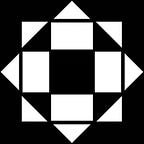Wild Beast of Art
How Henri Matisse released colour from captivity and became the ‘Father of the Fauves’
The term ‘fauve’ is the French word for a ‘wild beast’ and referred to the instinctive, rather than trained, style of a group of painters united by their expressive, rather than realistic, use of colour. Henri Matisse was the foremost of the early Fauvist painters and often called the ‘Father of the Fauves’. His influence can be detected in the work of many many major artists including Georges Braque, Pablo Picasso and Gustav Klimt…
In 1905, Matisse painted a portrait that would become famous in art circles and cited as a key piece of groundbreaking art by many academics and art historians. With Green Stripe, or a Portrait of Madame Matisse, he has rejected traditional use of colour and most notably he even uses quite vibrant colours for the shadows as well as there being strokes of incongruous hues daubed here and there.
As a portrait, the formal structure is fairly traditional. It’s lit from one side, eyes at the vertical mid-point, very slightly to the left. Matisse, though, is obviously more interested in the structure and pattern created by the patches of bright colour than in a true representation of his wife. The title he gave the picture also tells us this.
